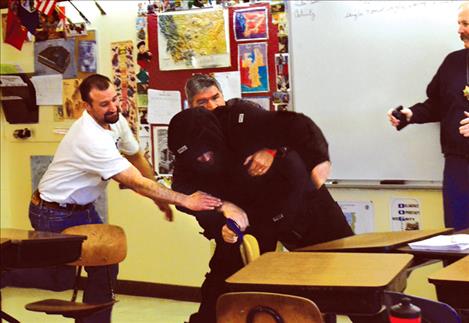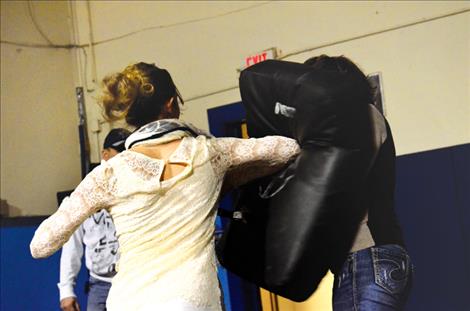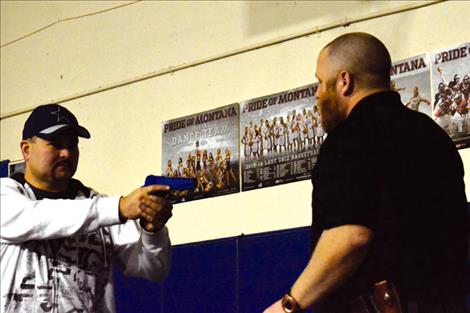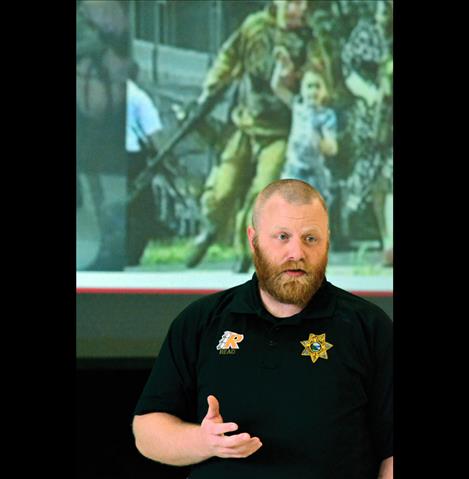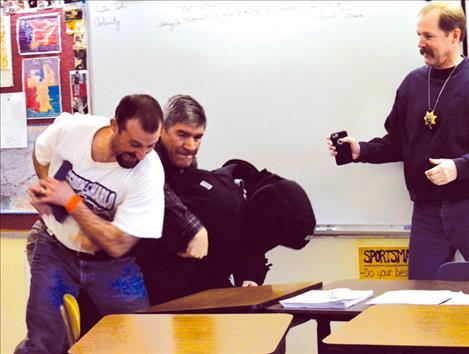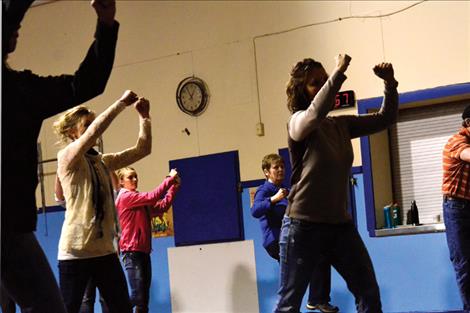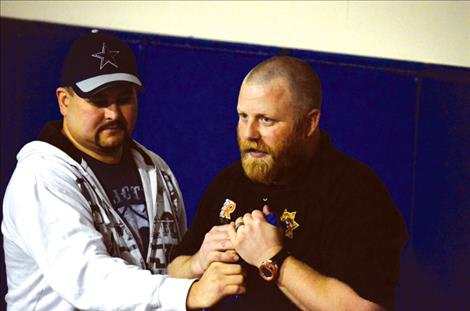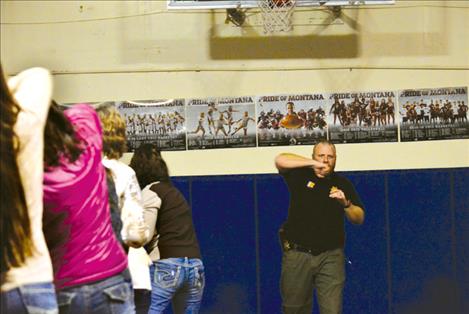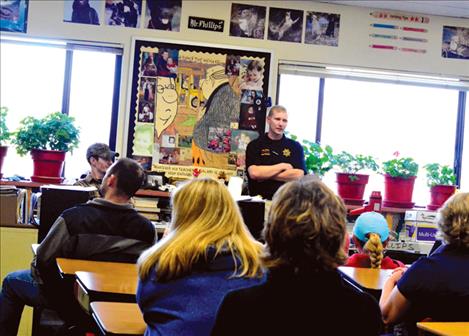Teachers learn to tackle mock school shooter
Hey savvy news reader! Thanks for choosing local.
You are now reading
1 of 3 free articles.
ST. IGNATIUS – Several teachers wait nervously in a classroom. They know what’s coming, but they aren’t sure how they will react. They soon find out.
A popping sound like a firecracker is heard from the hallway. A gun was being fired. Suddenly, a man in black clothes rushes into the room aiming a gun at the teachers. Within seconds, the teachers react.
Principal Dan Durglo, middle school football coach, tackles the intruder, and middle school history teacher Lyle Cronk wrestles the gun from the man’s hand. The intruder is taken to the ground. The all-clear signal goes off.
“I was expecting it, but it still scared me,” Cronk said. “My first instinct was to climb the walls.”
With students dismissed for the day, the Lake County Sheriff’s Office provided training against school shooters for Mission School District staff — from cooks to the superintendent — with help from the St. Ignatius Police Department.
“We are training educators for the unthinkable,” said Levi Read, School Resource Officer, adding that training has become necessary with more school shootings happening every year. “With every one of these shootings, everything was okay until it wasn’t.”
Officer Read told the teachers that the mock shooting they were about to participate in would feel real to their senses. He said, as it is with a real situation, the teachers and staff would have a heart pounding, adrenaline-releasing response.
“This is the world we live in and you need to be prepared,” he said. “When you are as scared as you ever have been, you’ll need a plan.”
Although schools often have a school resource officer on campus, teachers and staff are usually the first to encounter a situation, Read said.
“I know you didn’t become teachers to learn to kick someone’s teeth out,” he said of an intruder. “That’s why we put cops in schools, but the teachers are on the front lines.”
And every second counts during a shooting.
“The timing of these events is not on our side,” he said, explaining that an incident is often over in about 4 minutes on average. It takes law enforcement about 5 minutes to be notified and then respond to a call. It can even take a school resource officer a minute to run across campus.
Police Chief Matthew Connelly and Officer Read taught teachers how to take a gun away from an intruder. Officer Clay Shoemaker taught the teachers how to escape the building with a line of kids. Lake County Sheriff’s Detective Rick Lenz was in one room working with a group of teachers on ways to barricade the door.
Teachers and staff were taught how to react to a shooting to gain time, and those methods were learned by law enforcement from past occurrences in shootings across the country. Evaluating the situation was the first response.
“You don’t want to end up jumping from the pan into the fire,” Officer Read said of running towards gunfire or other problems. The next split second reaction should be to lock the doors and add barriers, but if it’s possible, the best choice is to run.
“If you find yourself facing a shooter, there are three things you can do to survive: run, hide, and fight,” Read explained.
Running should be chosen over hiding.
“Don’t hide first,” he said. “Lock down the room, barricade it.”
Playing dead isn’t a good option.
“Don’t just play dead. People do that over and over. Why do people do it? I don’t know, maybe they learned something from a bear movie, but it doesn’t work. Run if you can, but if you can’t, then hide.”
Fighting is the last resort.
“If you are cornered and have no option, you need to fight,” he said.
Negotiating with a shooter is another thing that he said hasn’t really worked well in the past.
“The shooter is there to kill as many as possible,” he said. “I know it’s hard to wrap your mind around this. People tend to view the world through their own experience, and if you don’t have a vicious thought process, it’s hard to believe people can want to kill other people.”
Several years ago school shootings were handled differently than they are today. During the school shooting at Columbine High School in 1999, law enforcement didn’t go into the school right away. Instead they waited for backup as was the protocol and many students were killed. After studying school shootings from the past, law enforcement decided to change the way they react to a shooter.
“Now, we are trained that whoever is there (in law enforcement) needs to get in and stop it,” he said. “There are things worth dying for and a school full of kids is worth dying for.”
Law enforcement officials also realized that school staff played an important role in many situations.
“Over and over, we’ve seen principals and teachers take down shooters,” he said adding that training the school staff was a logical reaction to that fact. “With what has been going on, I don’t think it’s fair not to train educators.”
Elementary teacher Lloyd Phillips said that when he started teaching 40 years ago he would never have believed that he would eventually need to be trained to take down a school shooter.
“I think this is necessary, especially with the drug use we have today,” he said, adding that he wanted more training.















